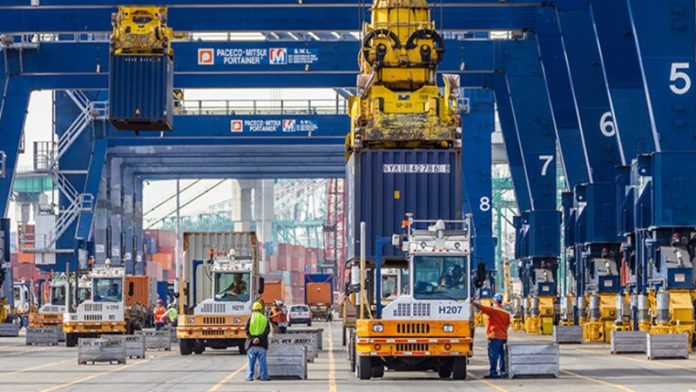-
Container moves on ocean-going ships sank in all US regions, with East Coast ports suffering a 20% year-on-year decrease
-
Average call size on the West Coast plummeted by over 26%
-
Despite the downturn, US ports saw enhanced operational efficiency: In terms of port moves per hour, Gulf ports grew 66% YoY and East Coast ports, jumped by 90%
-
Yard productivity improved at US ports: West Coast ports reduced median import and export container dwell time by 30% and 45%, respectively
-
Ship waiting time dropped across all US coasts, with the most substantial decline of 78% recorded at East Coast ports
-
In contrast, Southeast Asia saw a 20% rise in port moves per hour and superior yard productivity compared to Chinese counterparts
Container moves sank in US ports but soared in Southeast Asia, although operational efficiency in both regions improved, according to the S&P Global Container Port Performance report for the third quarter.
The report zeroes in on the main ports in the US, China, and Southeast Asia, examining key metrics such as container moves, call size development, port moves per hour (PMPH), import and export dwell time, berth moves per hour, and ship waiting time.
The standout revelation is the decline in container moves on ocean-going ships across all US regions. Notably, ports on the US East Coast experienced a collective year-on-year decline of nearly 20% in the third quarter. On the US West Coast, the average call size—indicating the quantity of containers loaded and discharged per individual ship call—plummeted by over 26%.
Even though demand and call sizes dropped, the report shows that operational efficiency improved in all US regions. Gulf ports had a 66% increase in PMPH in Q3 2023. On the East Coast, PMPH rose by over 90%, indicating a significant boost in port productivity.
Container dwell time—the time containers spend in the yard before being picked up or loaded onto a ship—improved for West Coast ports. Import container dwell time decreased by 30%, and export container dwell time dropped by 45%. However, the main East Coast ports saw a slight increase in export container dwell time, going against the overall trend.
Ship waiting time, another vital parameter, continued its decline on all US coasts, with the most substantial drop recorded at East Coast ports—a 78% reduction.
On the other side of the globe, the performance at Chinese ports displayed ongoing improvement, with the main gateways collectively witnessing a 30% increase in PMPH.
Unlike the US, Southeast Asia strongly grew in container moves on ocean-going ships. The region is becoming a key source in global supply chains, as shown by the increase in container moves at its ports.
Operational performance at the main Southeast Asia gateways experienced a 20% increase in PMPH during the third quarter of 2023. Furthermore, yard productivity outpaced their Chinese counterparts, positioning Southeast Asia as a competitive player in the evolving landscape of global trade.
Turloch Mooney, the director at S&P Global Market Intelligence, highlights the role of better port performance and enhanced network efficiency in helping the maritime trade industry reduce its carbon footprint. By enhancing these aspects, the industry can contribute significantly to its decarbonization targets.
“Better port performance and network efficiency are among the key levers the maritime trade industry has to tackle emissions. Digitization is a critical opportunity for sustainable and long-term efficiency improvements to help the industry meet decarbonization targets and reduce the risk of supply chain disruption,” Mooney said.





